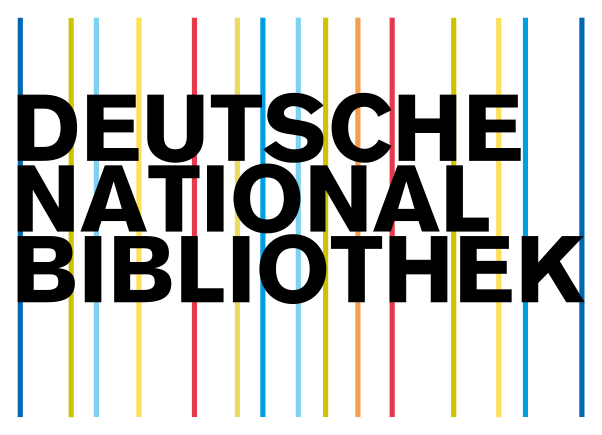A Survey On Detection of Falsified and Substandard Drugs
DOI:
https://doi.org/10.5281/zenodo.6969903Keywords:
Pharmaceutical Supply Chain Management, Counterfeit Drugs, Blockchain TechnologyAbstract
A world-wide crisis to public and the consumers with high risks can be drug counterfeiting. The standardization of drug safety has become difficult and is a major concern due to the rise in the number of internet pharmacies. Since the drugs pass through difficult and complex distribution networks, it becomes difficult to detect counterfeits. Thus increasing the opportunities for falsified medicines to enter the actual supply chain. In this particular paper, we are using blockchain technology to mention data immutability to chop back the cost of operation within the pharmaceutical supply-chain hence making it safer. This is often implemented through blockchain technology which might be an allegedly immutable cryptographic ledger which has repeated sequential hashing and is fault-tolerant using a consensus algorithm by adding an alert system thus notifying when there's any fault.
Downloads
References
Tony Moffat, Robert Watt and Sulaf Assi, “The use of near infrared spectroscopy to detect counterfeit medicines,” Department of Pharmaceutical and Biological Chemistry, The School of Pharmacy, University of London, 29–39 Brunswick Square, London WC1N 1AX, UK, 01 October 2010.
Sandipan Banerjee , James Sweet , Christopher Sweet , and Marya Lieberman, “Visual Recognition of Paper Analytical Device Images for Detection of Falsified Pharmaceuticals,” Department of Computer Science and Engineering, Department of Chemistry and Biochemistry, University of Notre Dame, IEEExplore 2016. https://ieeexplore.ieee.org/abstract/document/7477598.
Benjamin K. Wilson, Harparkash Kaur, Elizabeth Louise Allan, Anthony Lozama, David Bell,“A New Handheld Device for the Detection of Falsified Medicines: Demonstration on Falsified Artemisinin-Based Therapies from the Field,” The American Journal of Tropical Medicine and Hygiene, Volume 96, Issue 5, 3 May 2017.
“How blockchain could eliminate counterfeit medicine,” Innovation Enterprise, https://channels.theinnovation enterprise.com/articles/how-blockchain-could-eliminate-counterfeit-medicine, 5 September 2018.
Patrick Sylim, MD, Fang Liu, MS ,Alvin Marcelo, MD , Paul Fontelo, MD, MPH , “Blockchain Technology for Detecting Falsified and Substandard Drugs in Distribution: Pharmaceutical Supply Chain Intervention”, National Library of Medicine, National Institutes of Health, Bethesda, MD, United States, 13 September 2018.
“A Blockchain and Machine Learning-Based Drug Supply Chain Management and Recommendation System for Smart Pharmaceutical Industry”, Journal ListDaruv.26(2); 2018 DecPMC6279664, 20 November 2018.
Muna Alsallal, Mhd Saeed Sharif, Baydaa Al-Ghzawi, Sabah Mohammed Mlkat al Mutoki, “A Machine Learning Technique to Detect Counterfeit Medicine Based on X-Ray Fluorescence Analyser”, ATU Technical University Baghdad, Iraq, School of Architecture, Computing and Engineering, College of Arts, Technology and Innovation, UEL. University Way, Dockland Campus London, E16 2RD, UK, IEEExplore 2018, https://ieeexplore.ieee.org/abstract/document/8659110.
Yan Huang, Jing Wu, Chengnian Long ,“Drugledger: A Practical Blockchain System for Drug Traceability and Regulation,” Department of Automation, Shanghai Jiao Tong University and the Key Laboratory of System Control and Information Processing, Ministry of Education of China, Shanghai 200240, China, IEEExplore 2018, https://ieeexplore.ieee.org/document/8726740.
Seyednima Khezr , Md Moniruzzaman , Abdulsalam Yassine and Rachid Benlamri ,“Blockchain Technology in Healthcare: A Comprehensive Review and Directions for Future Research,” Department of Electrical and Computer Engineering, Lakehead University, 955 Oliver Road, Thunder Bay, ON P7B 5E1, Canada, 26 April 2019.
Wenbo Wang, Matthew D. Keller, Ted Baughman, Benjamin K. Wilson ,“Evaluating Low-Cost Optical Spectrometers for the Detection of Simulated Substandard and Falsified Medicines,” 4 November 2019.
Mohammed Torky, Emad Nabil, Wael Said ,“Proof of Credibility: A Blockchain Approach for Detecting and Blocking Fake News in Social Networks”, International Journal of Advanced Computer Science and Applications, 2019.
Jinhua Ma , Shih-Ya Lin , Xin Chen , Hung-Min Sun , Yeh-Cheng Chen , (Graduate Student Member, IEEE) and Huaxiong Wang, “A Blockchain-Based Application System for Product Anti-Counterfeiting”, IEEEAccess, 6 February,2020.
Khizar Abbas , Muhammad Afaq, Talha Ahmed Khan and Wang-Cheol Song,“A Blockchain and Machine Learning-Based Drug Supply Chain Management and Recommendation System for Smart Pharmaceutical Industry,” Department of Computer Engineering, Jeju National University, Jejusi 63243, Korea, MDPI electronics, 21 May 2020.
Victoria Ahmadi , Sophia Benjelloun , Michel El Kik , Tanvi Sharma , Huihui Chi , Wei Zhou, “Drug Governance: IoT-based Blockchain Implementation in the Pharmaceutical Supply Chain”, IEEExplore 2020, https://ieeexplore.ieee.org/ document/9042950.
Downloads
Published
How to Cite
Issue
Section
URN
License
Copyright (c) 2022 Perspectives in Communication, Embedded-systems and Signal-processing - PiCES

This work is licensed under a Creative Commons Attribution 4.0 International License.






